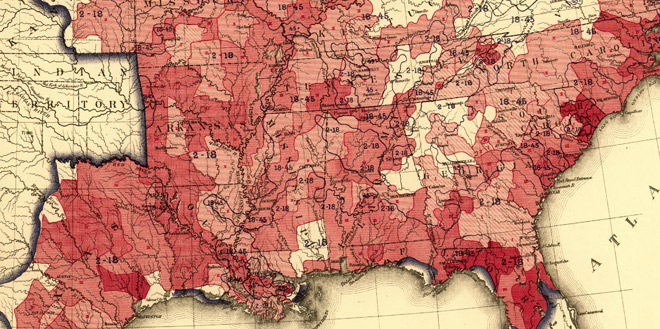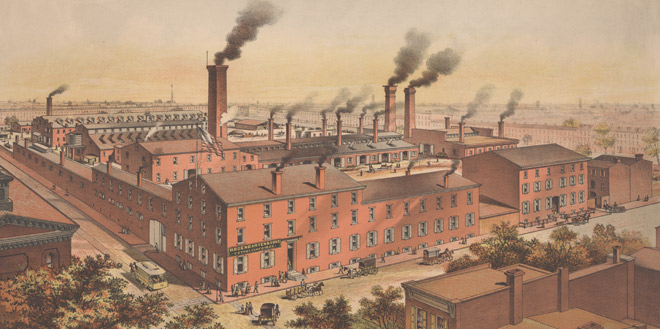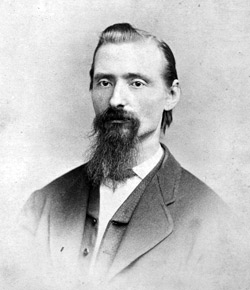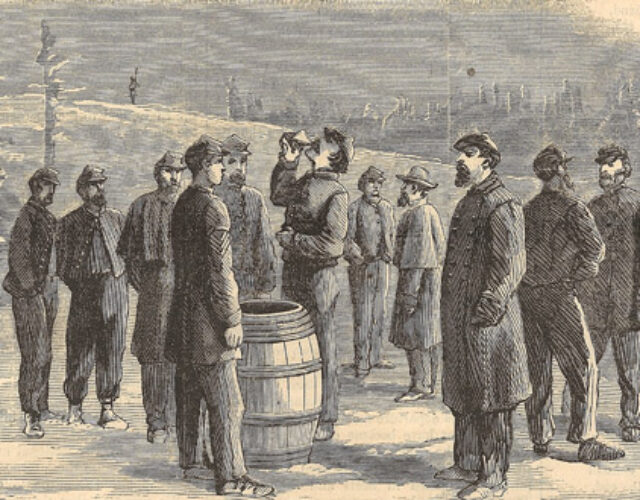In 1862, the second year of the American Civil War, Southerners took satisfaction in knowing that invading Union army troops would succumb to tropical diseases endemic to the South’s bayous, swamps, and coastal regions. Just wait until summer, Southern newspapers predicted.
The first test of this theory came in April 1862 in Shiloh, Tennessee, where Union General William T. Sherman’s forces met the enemy in a bloody battle. Before and after the fight, typhoid, diarrhea, scurvy, and the fevers associated with malarial diseases ravaged troops on both sides. One physician wrote, “The pestilential atmosphere of the country about Shiloh was producing an amount of sickness almost without parallel in the history of the war.” In May, Sherman mustered only half of his 10,000 troops because the other half were sick.
At Vicksburg, the disease-ravaged Union navy and army failed in its first attempt to capture the strategically important Southern city on the Mississippi River. One soldier observed that the gallinippers—slang for mosquitoes—were so thick about the camp that they “filled the air like rain drops.” Mosquito nets, called bars, were not yet widely available, and soldiers exploded gunpowder cartridges in their tents to keep the pests away, unaware that they were the source of much of the illness gripping the encampments. (It would be another 20 years before doctors began to suspect mosquitoes were to blame for malaria and yellow fever.) Almost three-quarters of the besieging Union troops were dead or too sick to work. Vicksburg’s defenders were no better off, described by a Union army commander as “haggard & care-worn.” One of the defending officers wrote, “The command suffers greatly from intermittent fever, and is generally debilitated from the long exposure and inaction of the trenches.”
Pestilential Warfare
Southern military physicians, all of whom were titled surgeons, took no satisfaction in the malarial outbreaks that decimated the ranks of their opponents. Disease takes no sides. South Carolina Surgeon Francis Peyre Porcher, who knew intimately the devastation caused by tropical diseases, attended to sick and wounded soldiers in several hospitals before his assignment to the Naval Hospital in Norfolk, Virginia. His patients arrived in Norfolk from all theaters of war, and when he looked eastward to the sea, the distant masts of blockading Union ships reminded him of supply shortages and the medicines he badly needed. Porcher worried especially about the scarcity of quinine, the closest thing to a miracle drug known to Civil War physicians.

A census map from 1870 displays the proportion of malaria-based deaths compared with total deaths in the United States at the time. In the reddest areas at least 14% of the deaths were attributed to malarial diseases.
Malaria, yellow fever, and other tropical diseases had several symptoms in common, including fevers, chills, and nausea. In the early stages of these diseases Civil War physicians gauged the illness by the frequency of recurring fever, hence “intermittent,” “remittent,” “tertiary,” or “quotidian” fevers. Physicians of the time did not connect mosquitoes to malaria, but they did know quinine was a sure way to ease its symptoms. The problem was getting and administering the drug, especially getting it in quantity.
The Southern Solution
Quinine is an alkaloid synthesized from the bark of cinchona, a tree native to South America. The Northern blockade of Southern ports made importing quinine difficult, and smuggling from Northern or European sources proved unreliable. Northerners had intercepted quinine in the heads of girls’ dolls and found it stuffed within the intestines of slaughtered animals. The need for quinine was desperate. One South Carolinian wrote to her mother, “I write now to beg you to send in your next letter a quarter of an ounce of quinine. You know, in this climate, life depends upon quinine—and though large quantities come in every ship, it is taken up so immediately for the army that it is exceedingly difficult for private individuals to procure it even at a very high price.”
Confederate Surgeon General Samuel P. Moore, the man in charge of creating an entire medical infrastructure for the South, needed large quantities of quinine to relieve Southern soldiers of fevers, and he needed them fast. A 50-year-old veteran of the Mexican War, Moore knew the success of his army depended at least in part on a reliable supply of quinine. But where could he find it?
Moore’s solution was to search for quinine equivalents among the flora of Southern fields and forests. He issued a directive to Confederate physicians to gather specific plants and send them for processing. But what plants native to the South would make good medicines?
In 1862 Moore summoned Porcher, a studious man in his late 30s, from his hospital duties for a special assignment. Porcher had all the credentials Moore needed. He was a descendant of the botanist Thomas Walter, who in 1788 published the first catalog of flowering plants in South Carolina. Porcher had graduated at age 19 from what is now the University of South Carolina with a thesis on botanical medicine, A Medico-Botanical Catalogue of the Plants and Ferns of St. John’s, Berkeley, South Carolina, and took his medical degree from the Medical College of the State of South Carolina. In his 15 years of doctoring he had studied in France and Italy, founded a medical journal and a preparatory school for medical students, and joined the faculty of the Medical College. He was fascinated by the medicinal applications of plants, and his wide-ranging experience as a physician equipped him with the analytical skills required for the job.
Although Moore had already put out a call for the collection of medicinally useful plants, he proposed that Porcher survey all Southern plants, shrubs, and trees and document all practical uses. Discovering a substitute for quinine was the priority.
Malaria and Quinine
A single female Anopheles mosquito was born in a stagnant pool of water, emerged, and joined millions of others following soldiers in camp and on the march during the warm 1862 summer. She dropped onto a soldier’s neck and injected her proboscis into his flesh. Sporozoites (parasites) transmitted from a previous meal—from another soldier’s infected blood—entered the new victim’s bloodstream, carrying parasites into the liver of the soldier. During an incubation period of one to two weeks the merozoites (transformed sporozoites) grew within blood cells, causing sickness. As the parasites multiplied, they slowed the flow of blood and brought on fevers, profuse sweating, violent shivering, aches, nausea, and chills. Symptoms lasted for many hours and returned periodically, even daily.
Not until 1880 would a physician discover the single-cell Plasmodium parasites that cause malaria, and their carrier would not be confirmed as the mosquito until the end of the century. Although malaria was usually not fatal, during the Civil War its symptoms debilitated whole regiments of soldiers, while malaria’s perceived close cousin, yellow fever, was deadly.
Just as the war began, Scientific American published an anonymous essay on what was then known and unknown about malaria, reflecting both an outlook recognizable to modern eyes and an older medical ideology. The origin of the word malaria—bad air—reflects this ideology. The essay observes frankly,
The essay describes various types or stages of “malarious disease,” from its mildest symptoms—intermittent fever or “dumb ague”—to its most common, “the ordinary fever and ague,” which produces violent shivering. The unknown author wrote that two substances had proven effective in either preventing or curing malarious disease: one, “a harmless vegetable substance,” cinchona bark, which has been known for centuries, and its quinine derivative; and the other, “one of the most terrible and deadly of the metallic poisons,” arsenic. Quinine did not cure the disease, but suppressing its symptoms was enough to keep a Civil War army on the march and in combat.
Astute military commanders made sure their soldiers took quinine prophylactically. Medical discipline was not easy to enforce: some, perhaps many, soldiers dosed themselves with patent medicines or other remedies that proved ineffectual and even dangerous. The command “fall in for your quinine” forced soldiers to leave their cooking fires and line up for their whiskey-laced ration. Soldiers even improvised words to the bugle tunes announcing sick call: “Dr. Jones says, Dr. Jones says: Come and get your quin, quin, quin, quinine. Come and get your quinine, Q-u-i-n-i-n-e!”
In his memoir of the war Union army Surgeon John Shaw Billings wrote, “Quinine was always and everywhere prescribed with a confidence and freedom which left all other medicines far in the rear. Making all due allowances for exaggerations, that drug was unquestionably the popular dose with doctors.”
The Northern Solution
Surgeon General Moore’s Northern counterpart, Union army Surgeon General William Hammond created the U.S. Army Laboratory to ensure the purity of drugs and to create standards for drugs purchased by medical purveyors (agents authorized to purchase raw materials for medicines) and distributed to the various theaters of war. Young, brilliant, and abrasive, Hammond reformed a superannuated army medical department still organized as it had been during the War of 1812. To meet the demands of a modern war Hammond assigned like-minded doctors to head the two laboratories established to assay drugs for purity and distribute them to the North’s fighting forces. To outsiders the laboratories—one in Astoria, New York, and the other in Philadelphia, but together making up the U.S. Army Laboratory—would have resembled strange manufacturing plants. The Philadelphia laboratory, for instance, also manufactured ordinary civilian clothing and towels. Its buildings housed steam engines, boilers and distillation equipment, administrative offices, chemistry apparatus, and storage for raw and repackaged materials. Soldiers, chemists, women, and the girls who sewed the clothing came and went.
Powers and Weightman, one of only two pharmaceutical firms in the United States to produce quinine during the war, leased some of its space to Hammond’s Philadelphia laboratory. The lab required an energetic chemist who would quickly get the place running and ensure that the North’s 30 medical depots got their supplies promptly. John Michael Maisch, a young German “of tall and commanding appearance,” was the choice. Maisch grew up in Hanau, Germany, entered the military, and was sentenced to prison for revolutionary speech during the Revolution of 1848. He escaped and came to the United States in 1849, virtually penniless. Maisch, a superb autodidact, learned pharmacy through his mentor, Philadelphia pharmacist Edward Parrish, and his School of Practical Pharmacy. Despite his lack of formal credentials Maisch eventually took over the chair of materia medica (a discipline focused on the therapeutic uses of medicine) at the College of Pharmacy of the City of New York. Hammond’s new Philadelphia laboratory, managed by Maisch, worked intimately with Powers and Weightman and other firms to produce quinine in reliable quantity for the North. Porcher, by contrast, had no such resources.

Lithograph from 1876 of Rosengarten and Sons’ manufacturing plant in Philadelphia, one of two companies that made quinine during the Civil War. The Confederate army lacked access to quinine, so Southern doctors tried to find a replacement in indigenous plants.
A Handbook and a Laboratory
Before the end of 1863 Porcher published Resources of the Southern Fields and Forests, Medical, Economical, and Agricultural: Being Also a Medical Botany of the Confederate States; with Practical Information on the Useful Properties of the Trees, Plants, and Shrubs. He organized the book for field use despite its 600-page length and included Latin and common names for about 3,500 plants and trees. The book instructed soldiers—and the officers who supervised them—to collect and dry plants and forward them to the South’s medical purveyors. Porcher’s detailed and encyclopedic instructions and advice used patriotism to appeal to its readers: “These a bounteous Providence has vouchsafed to a Confederacy of States, starting forth upon their career under new and happier auspices, and with independence and self-reliance forced upon them by an almost sacred necessity.”
Porcher believed his book provided a “repertory of scientific and popular knowledge as regards the medicinal, economical, and useful properties of the trees, plants, and shrubs found within the limits of the Confederate States.” His native plants would be as valuable as their more expensive foreign counterparts and would benefit the South’s doctors and farmers both during and after the war.
To complete his book in only a year Porcher put his mother and wife to work as assistants, consulted the best available libraries on botany and chemistry, and enlisted such colleagues as Joseph Le Conte, a well-known chemistry professor who worked at the medical depot in South Carolina (and who later cofounded the Sierra Club in California). Unlike the North, the South lacked the chemical ability to synthesize quinine from its alkaloid, but Porcher believed that he had found reliable native substitutes, including yellow poplar bark, tulip tree bark, holly, black alder, hazel alder, and knotgrass. Other promising substitutes included boneset (thoroughwort) and dogwood. For the former, Porcher recommended using an ounce of dried herb in a pint of boiling water to make a tea that would prove “quite sufficient in the management of many of the malarial fevers that will prevail among our troops during the summer.” Porcher cited dogwood bark as having “been employed with great advantage” in South Carolina, particularly as a substitute for cinchona, with the added benefit of reducing fever “of a typhoid character.”
But the exigencies of war limited Porcher’s inquiry. He found it impossible to test these plants in clinical trials. In some cases he was forced to rely on anecdote, folk tradition, or the recommendations of others.
Surgeon General Moore eagerly awaited Porcher’s book and wasted no time getting it into the hands of Confederate physicians. Based on Porcher’s work Moore recommended various substitutes mixed with whiskey—dogwood, poplar, and willow bark—to achieve the same effect as quinine. Newspapers published extracts and lists of needed plants to encourage citizens to help. The Confederate government also sent circuit riders to collect plants. Yet despite Porcher’s stature and Moore’s recommendations, some physicians rejected Porcher’s work, distrusting substitutes for quinine and other drugs. Others believed that plant-based medicines catered to fringe medical practitioners who refused to use “chemicals,” or synthesized medicines.
The Civil War provided a rigorous testing ground for which drugs worked and which did not. None of Porcher’s quinine recommendations proved successful, and the South struggled through the war years with what quinine it could smuggle or capture. The lasting legacy of Porcher’s book is as a layman’s guide to Southern botany, and it is still cited today. In the end Northern soldiers took their quinine rations and suffered less from Southern diseases than did their Confederate opponents, despite the hopes and predictions of Southern newspapers.
Drug Agent

John Michael Maisch
Unlike Francis Peyre Porcher, John Michael Maisch had plenty of quinine. After French chemists first isolated the alkaloid from cinchona bark, Philadelphia-based Zeitler and Rosengarten (later Rosengarten and Sons) had the foresight to hire French chemists and within three years of the discovery were selling quinine. Powers and Weightman, which merged with Rosengarten after the war, also processed quinine with other in-demand drugs, such as opium. Both firms obtained cinchona in bulk at low cost and processed it to obtain the quinine, which was then extracted into sulfate. Maisch, working for the Union army, ensured the purity of the drug, developed standard doses, and oversaw the packaging and labeling of the drugs for distribution to the army medical depots. This was no small task: physicians in the field told many stories of useless or adulterated drugs that came to them from purveyors.
By the end of the war Maisch’s laboratory produced 160 different medicines, and his lab claimed to have saved the government a million dollars through its work. Maisch effectively directed the federal government’s first drug-manufacturing and regulatory operation. Not surprisingly, some people attacked Maisch’s laboratory as governmental excess that competed with private business. Yet Maisch’s work showed that his laboratory, in working closely with pharmaceutical firms, stimulated business.
The diseases Northern soldiers encountered in the South forced the North to industrialize its quinine production, which in turn required an emphasis on quality control and sophisticated channels of testing and distribution. The Civil War, although a time of incalculable destruction, provided the ingredients and conditions necessary to create the nation’s first example of modern large-scale drug manufacturing as well as the first government-run drug-testing laboratories.




